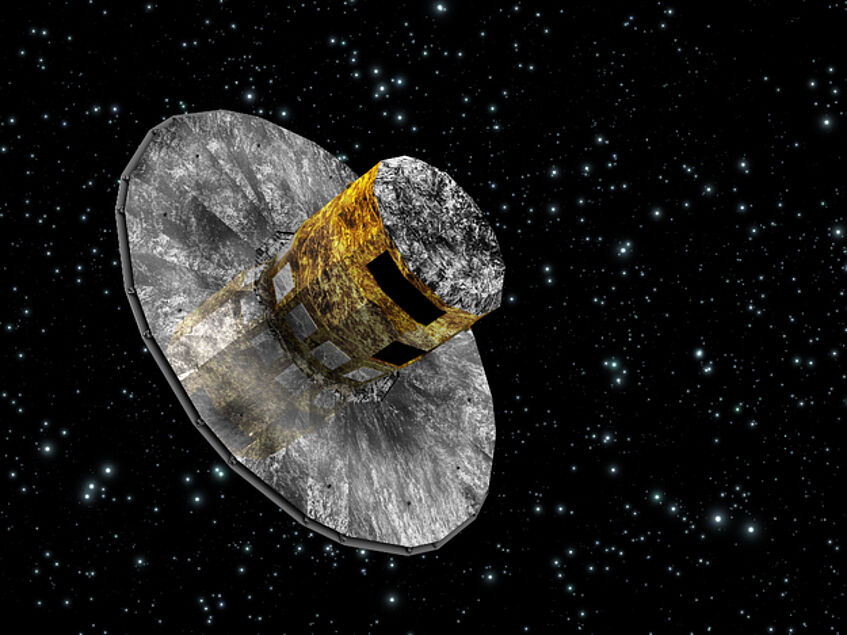GAIA

Artist's impression of the GAIA spacecraft.
GAIA
Mission Overview
The ESA satellite GAIA is designed to create a 3D map of our Galaxy to reveal its composition, formation and evolution. GAIA delivers the largest all-sky survey to date with high accuracy measurements of positions of 1 billion stars and radial velocities of the brightest 150 million objects in our Galaxy and the Local Group. Additionally, with GAIA, tests for general relativity and cosmology will be made and asteroids in the solar system should be investigated. Another aim of GAIA is to detect and classify extra-solar planetary systems. The mission lifetime is scheduled for 5 years.
Contribution of our Institute
The Institute of Astrophysics is involved in several aspects:
- Visualization of data of 1 billion stars with 26 measured properties each.
- Measuring the position of the Gaia satellite in the sky with the Leopold-Figl-Observatorium in Lower Austria. These measurements are necessary for the accuracy of the catalogue.
- Participation in the programme 'Gaia Science Alerts', where follow-up observations of unexpected events are made, such as supernovae, stellar eruptions or gravitational lensing effects.
Involved Personnel
Mission Manager: F. Jansen
Project Scientist: T. Prusti
Deputy Project Scientist & System Scientist: J. de Bruijne
Science Operations Manager: U. Lammers
Spacecraft Operations Manager: D. Milligan
Project Manager: G. Sarri
Austrian coordinator: J. Alves
Milestones
Launch date: 19 December 2013
Funding
Austrian participation: bm:vit & FFG
Links
